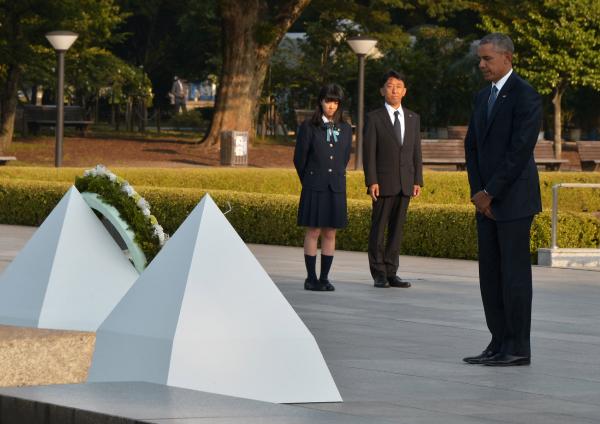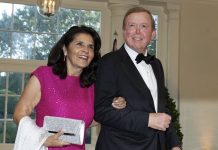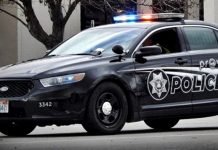
HIROSHIMA, Japan, May 27 (UPI) — President Barack Obama traveled to Hiroshima, Japan, on Friday, marking the first time a U.S. president has visited the site of the world’s first nuclear attack, carried out more than 70 years ago.
Obama arrived in Hiroshima Friday afternoon and along with Japanese Prime Minister Shinzo Abe, laid a wreath at the Hiroshima Peace Memorial — a UNESCO World Heritage Site that was built in 1915. Thirty years later, it was nearly decimated by the atomic bomb dropped by the United States. The structure, in fact, was the only one left standing near the bomb’s hypocenter.
The president is in Japan for the G7 Summit in Ise-Shima, following a visit to Vietnam.
“Seventy-one years ago on a bright cloudless morning, death fell from the sky and the world was changed,” Obama said at the Hiroshima Peace Memorial Park. “A flash of light and a wall of fire destroyed a city, and demonstrated that mankind possessed the means to destroy itself.”
Hiroshima was the first of two U.S. nuclear targets intended to bring an end to World War II in August 1945. Just after 8 a.m. on Aug. 6, a 393d Bombardment Squadron B-29, called the Enola Gay, dropped the bomb known as “Little Boy” on the southwestern Japanese industrial town.
The bomb contained about 140 pounds of uranium-235 and took about 45 seconds to reach its explosion altitude of 1,900 feet.
“Let all the souls here rest in peace, for we shall not repeat the evil,” the president said. “We come to ponder the terrible force unleashed in the not so distant past. We come to mourn the dead.”

Survivors in the Japanese town would later say they remembered seeing an extremely bright flash in the sky and heard a loud boom. Up to 80,000 people — about a third of Hiroshima’s population — were killed by the initial blast and firestorm. Another 70,000 were injured. Thousands more died in the decades after from radiation sickness.
Three days later, the world’s second, and most recent, atomic bombing leveled the city of Nagasaki, about 250 miles southwest of Hiroshima. Six days after the second bombing, Japan surrendered and brought World War II to an end.
No U.S. president has visited the site before, and last month, Secretary of State John Kerry became the first U.S. official to see in-person the Hiroshima Peace Memorial, which was established in 1950. In 1996, it was was registered on the UNESCO World Heritage List based on the Convention for the Protection of the World Cultural and Natural Heritage.
“We are under the U.S. nuclear umbrella, so Abe can’t do so much,” Obama said about U.S. protection of Japan. “China is expanding more and more” he said, and he acknowledged “the situation is getting a little dangerous,” he said.
After visiting Hiroshima, Obama was scheduled to depart Marine Corps Air Station Iwakuni, Japan, for Washington, D.C., with a scheduled refueling stop in Alaska.






